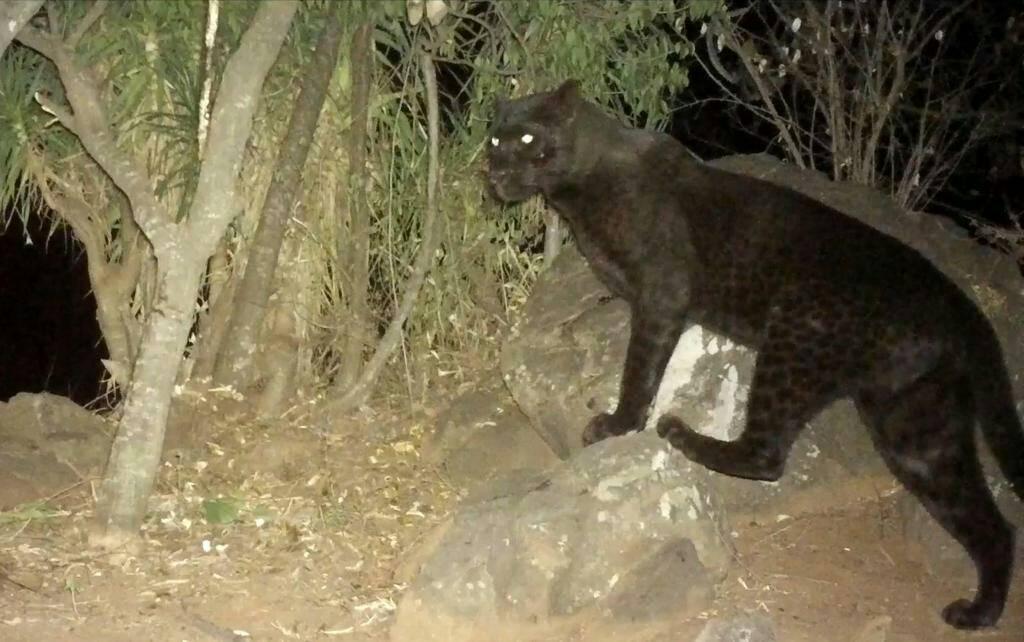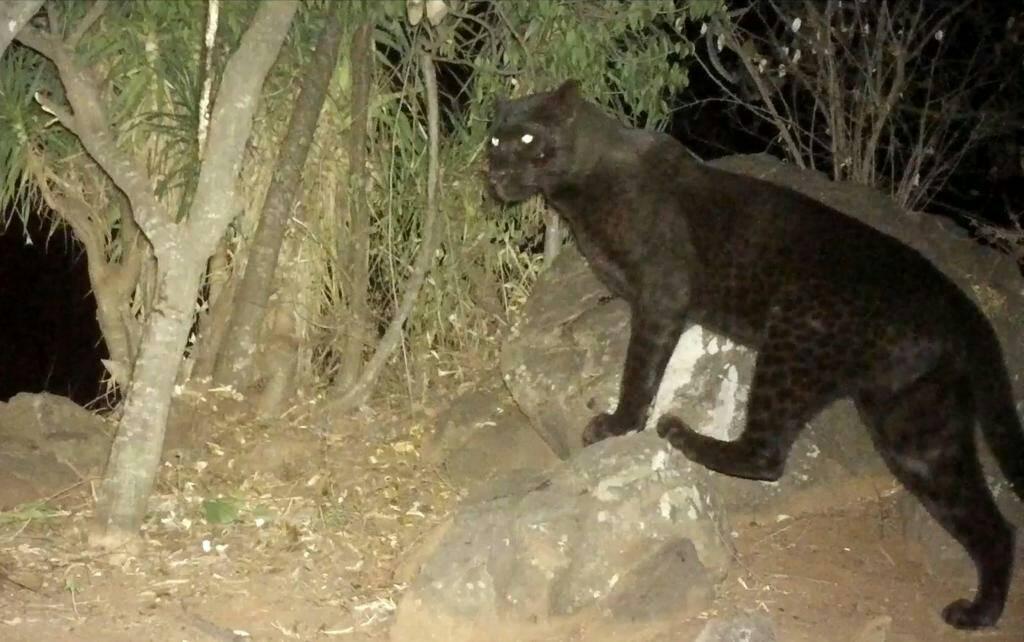
The story of a black leopard being allegedly seen in Kenya for the first time in 100 years broke out this week – but a young Samburu warrior is really the silent figure behind the discovery.
“The remote camera that I helped set up started capturing images of the black leopard from January 2018. I have many images and videos of the animal,” Letoluai Ambrose, a Research Assistant with Sandiego Zoo Global told me. He seemed perturbed by the interest that the leopard has received from all over the world since last week.

Letoluai, 24, grew up in Koija near Loisaba Conservation. He studied wildlife science at Kenya Wildlife Service Training Institute and returned home to support conservation efforts.

He was hired by Sandiego Zoo Global as a research assistant in a project that studied the behaviour of leopards in the Laikipia plateau. Part of this research is finding ways of mitigating the problems that leopard cause within the pastoralist communities.
During his interaction with the community, he heard about the presence of black leopards.
“At first I did not believe what they were telling me since historically we have been hearing such stories from old people,” he said.
At a later date, an elder asked him “Why don’t you capture the big black one in Lorrok area with your cameras?” He also confirmed with the owner of Lorrok ranch about the sighting.
He wrote an email to his boss and fellow scientist, Nicholas Pinfold, about the presence of the black leopard and they agreed to place trap cameras with hope of capturing images.
The activities of the black leopard started appearing in the cameras and a paper about its presence was published here.

But the leopard became famous when Letoluai was requested by the owner of Lorrok Ranch to take a British photographer Will Burrad-Lucas to see the leopard. He showed the photographer where to place his remote cameras.
“Will Burrad captured quality images but the media should not state that he found the leopard. He was only here for three days,” Letoluai mused.
Letoluai states that no individual can take credit for research findings because so many people are involved in the activity.
”Were it not for that elder, the local rangers, the landowner and the involvement of scientists from Sandiego Zoo Global, we would not have made this discovery. Everyone had a role and no one person can claim credit,” said Letoluai.
Some sections of the media have claimed that this was the first time that a black leopard has been seen in Kenya in 100 years but to the contrary, the cats have been sighted many times in different parts of Kenya.
Author: John Kisimir – jkisai@gmail.com
